Ultra-Processed Foods Lawsuit
At Farah & Farah, we believe that everyone deserves to know what they’re putting into their bodies—and to hold corporations accountable when they prioritize profits over people’s health. Ultra-processed foods are everywhere, packed with additives, chemicals, and hidden dangers that can lead to serious health issues over time, especially in children. If you or a loved one has suffered from conditions linked to these products, you’re not alone. We’re here to fight for those who have been misled by big food companies and to help you seek the justice and compensation you deserve. Let’s take on this battle together.

FREE CASE REVIEW
Home > Product Liability Attorneys > Ultra-Processed Foods Lawsuit
What Are Ultra-Processed Foods (UPFs)?
Ultra-processed foods are industrially manufactured food products that go far beyond simple processing, containing artificial additives, preservatives, sweeteners, and other ingredients not typically found in home cooking. These foods are designed for convenience, long shelf life, and enhanced taste, often at the cost of nutritional value. Unlike whole or minimally processed foods, ultra-processed foods undergo multiple stages of industrial processing and often include substances like high-fructose corn syrup, hydrogenated oils, artificial flavorings, and emulsifiers.
Common examples of ultra-processed foods include:
- Sugary cereals
- Soda and other sweetened beverages
- Packaged snacks (chips, cookies, candy bars, etc.)
- Instant noodles and soups
- Processed meats (hot dogs, chicken nuggets, deli meats, etc.)
- Frozen meals and fast food
While they may be convenient, studies have linked excessive consumption of ultra-processed foods to serious health issues, including obesity, heart disease, diabetes, and even certain cancers. As awareness grows about their potential risks, lawsuits are emerging against food manufacturers for deceptive marketing, misleading health claims, and failure to warn consumers about long-term health effects.
Difference Between Processed and Ultra-Processed Foods
Not all processed foods are bad—many foods undergo some level of processing before reaching your plate. However, ultra-processed foods (UPFs) go far beyond basic food preparation, incorporating artificial ingredients, preservatives, and additives that make them more harmful to health. There are four levels of food processing, called the Nova classification:
1. Unprocessed or Minimally Processed Foods
These are whole foods that are either untouched or undergo minimal processing for safety, preservation, or convenience. They retain their natural nutrients and contain no artificial additives. Examples include fresh fruits and vegetables, whole grains, nuts, seeds, eggs, fresh meat, and plain yogurt.
2. Processed Culinary Ingredients
These foods have been extracted or refined from natural sources to be used in cooking. While processed, they aren’t consumed alone but rather as part of homemade meals. Olive oil, butter, salt, sugar, and flour, are all processed culinary ingredients.
3. Processed Foods
Processed foods are made by combining minimally processed foods with added ingredients like salt, sugar, or oils to enhance flavor and shelf life. They often undergo simple preservation techniques like canning, freezing, or fermentation but still resemble their original form and contain relatively few ingredients. Canned beans, cheese, pickled vegetables, fresh-baked bread, smoked fish, and homemade soups are examples of processed foods.
4. Ultra-Processed Foods (UPFs)
The final level of the Nova classification is UPFs, which contain little to no whole-food ingredients. Fast food, packaged snacks, processed meats, soft drinks, frozen meals, sugary cereals, instant noodles, and more, are all considered UPFs. It’s these that are linked to serious health risks like type 2 diabetes.
Prevalence of Ultra-Processed Foods
Ultra-processed foods (UPFs) have become a staple in many households, dominating grocery store shelves, fast food menus, and even school cafeterias. But why are these highly processed products so widespread? The answer lies predominantly in lower costs and convenience, both for manufacturers and consumers, but those are not the only factors involved.
Cost-Effectiveness and Convenience
The ingredients for UPFs, like high-fructose corn syrup and hydrogenated oils, are generally just cheaper for manufacturers than healthier alternatives. UPFs are cheaper to produce en masse and their longer shelf-life reduces the costs of storing them. This results in greater profits for the manufacturer and some cost savings for consumers as well. Despite their health risks, for some, UPFs are the predominant foods that they can afford, due to their lower costs and the convenience of their longer shelf-life.
Aggressive Marketing and Addictive Nature
Food companies spend billions of dollars every year marketing UFPs, which often are accompanied by cartoon characters and bright colors to make them more appealing to children. On top of that, the sugars involved in making UFPs are addicting; manufacturers have perfected recipes to be irresistible, triggering cravings for sugar, salt, fat, and/or caffeine, which can keep consumers coming back to these snacks repeatedly.
Government Subsidies and Corporate Influence
Part of the reason the cost is so much lower for UPFs than it is for fresh, unprocessed foods, is that the ingredients that go into making UPFs, such as corn and soy, are heavily subsidized by the US government. This keeps prices, for both manufacturers and consumers, artificially lower than they would be otherwise.
How Are Ultra-Processed Foods Regulated by the FDA?
The food industry is one of the most highly regulated sectors in the world, yet ultra-processed foods (UPFs) often slip through regulatory gaps when it comes to ingredient transparency, misleading marketing, and consumer protection. While government agencies establish food safety guidelines, many UPFs are still legally allowed to contain additives, preservatives, and synthetic ingredients that may have long-term health consequences. On top of that, these companies use vague language in their labeling to make their products sound healthier than they actually are.
Classified as Generally Recognized as Safe
The FDA regulates ultra-processed foods (UPFs) primarily through oversight of food additives, labeling, and ingredient safety, but it does not specifically define or categorize UPFs as a separate food group. Many ingredients in these products, such as preservatives, emulsifiers, and artificial sweeteners, fall under the Generally Recognized as Safe (GRAS) system, allowing companies to self-certify additive safety without rigorous FDA review. This loophole makes it possible for potentially harmful ingredients to be widely used in food products without clear, independent evaluation.
Additionally, while the Nutrition Labeling and Education Act (NLEA) requires manufacturers to disclose nutritional information, it does not address the extent of processing or the cumulative health risks of UPFs, leaving consumers unaware of how much they actually consume.
Proposed Changes to FDA Regulations
To address growing concerns, the FDA has proposed Front-of-Package (FOP) labeling to highlight key nutrients like added sugars, saturated fats, and sodium, but there are no specific regulations targeting UPFs themselves. This gap allows food companies to market highly processed products with misleading health claims (e.g., “natural,” “whole grain,” or “low-fat”), obscuring their true nutritional impact. While there is increasing recognition of the link between UPFs and chronic diseases, the lack of clear definitions and targeted policies enables their continued dominance in the food supply, often without consumers fully realizing how much they are eating.
$2+ BILLION IN RESULTS

UPFs and Health Problems in Children
Although UPFs have been linked to health problems that affect adults as well, they can pose a serious risk to children’s health, particularly increasing rates of type 2 diabetes and non-alcoholic fatty liver disease (NAFLD). High in added sugars and unhealthy fats, these foods contribute to insulin resistance, a key driver of early-onset type 2 diabetes in children. Excess sugar and processed ingredients also strain the liver, leading to fat buildup and inflammation, which can progress to non-alcoholic steatohepatitis (NASH), a severe form of liver disease. With UPFs making up a significant part of many children’s diets, these conditions are rising at alarming rates, posing lifelong health risks.
What Is Type 2 Diabetes?
Type 2 diabetes is a chronic condition that affects how the body processes blood sugar (glucose). In a healthy body, insulin—a hormone produced by the pancreas—helps regulate blood sugar levels by allowing cells to absorb and use glucose for energy. However, in type 2 diabetes, the body becomes insulin resistant, meaning cells no longer respond properly to insulin. This leads to high blood sugar levels, which can cause serious health complications over time.
Type 2 Diabetes in Children
While type 2 diabetes was once considered an adult-onset disease, it is now increasingly diagnosed in children and teenagers, largely due to poor diets high in ultra-processed foods, sugary beverages, and unhealthy fats. If left unmanaged, the condition can lead to heart disease, nerve damage, kidney problems, and vision loss, making early intervention and lifestyle changes essential.
Symptoms of Type 2 Diabetes
The symptoms of type 2 diabetes can include:
- Fatigue
- Blurry vision
- Increased thirst
- Increased hunger
- More frequent urination
- Unintentional weight loss
- Slow-healing sores
- More frequent infections
- Tingling or numbness in the feet and/or hands
- Darkened skin under the arms or on the neck
Causes of Type 2 Diabetes
There are two primary factors that cause type 2 diabetes. The first is that the cells of the liver, muscles, and body fat become resistant to the insulin the body produces. The second is that the pancreas can’t keep up with the body’s needs and doesn’t produce enough insulin to maintain healthy blood sugar levels. Why these two things start happening isn’t fully known, but they’re associated with obesity and inactive lifestyles.
What Is Insulin?
Insulin is a hormone produced by the pancreas that helps regulate blood sugar (glucose) levels. When you eat, carbohydrates break down into glucose, which enters the bloodstream. In response, the pancreas releases insulin, which acts like a key, allowing glucose to enter cells and be used for energy.
In a healthy system, insulin keeps blood sugar levels stable. However, in type 2 diabetes, the body becomes insulin resistant, meaning cells no longer respond effectively to insulin. This causes excess glucose to build up in the bloodstream, leading to high blood sugar levels that can result in serious health complications if not managed properly.
What Does Glucose Do?
Glucose is the primary source of energy for the body’s cells. It comes from the food we eat, especially carbohydrates, and is transported through the bloodstream to provide fuel for muscles, organs, and the brain. Once in the bloodstream, glucose needs insulin to help it enter cells, where it is converted into energy.
Risk Factors of Type 2 Diabetes
While anyone could develop type 2 diabetes, the following are the factors that can increase the risk of developing the condition:
- Being overweight or obese
- Body fat stored primarily around the abdomen
- Inactive lifestyle
- Family history of type 2 diabetes
- Older age
- Having prediabetes
- Being pregnant
- Having polycystic ovary syndrome
- Low levels of high-density lipoprotein (HDL) cholesterol
- Being Black, Hispanic, Asian, Pacific Islander, or Native American
Complications of Type 2 Diabetes
Those who have type 2 diabetes are often at greater risk for the following complications:
- Heart disease
- Blood vessel disease
- Nerve damage
- Kidney disease
- Slow healing
- Eye damage
- Skin conditions
- Dementia
- Sleep apnea
- Hearing impairment
What Is Non-Alcoholic Fatty Liver Disease?
Non-alcoholic fatty liver disease, or NAFLD, is a condition in which excess fat builds up in the liver and isn’t caused by the consumption of alcohol. It is closely linked to poor diet, obesity, insulin resistance, and type 2 diabetes. NAFLD is becoming increasingly common in children, largely due to the high consumption of ultra-processed foods and sugary drinks, which contribute to fat accumulation in the liver.
In its early stages, NAFLD may not cause symptoms, but over time, it can progress to non-alcoholic steatohepatitis (NASH)—a more severe form of the disease that leads to liver inflammation, scarring (fibrosis), and even liver failure. Since the liver plays a crucial role in detoxifying the body and processing nutrients, long-term damage can have serious health consequences.
What Is Non-Alcoholic Steatohepatitis?
Non-alcoholic steatohepatitis (NASH) is a severe form of Non-Alcoholic Fatty Liver Disease (NAFLD) that involves inflammation and liver cell damage due to excess fat accumulation. Unlike simple fatty liver, NASH can lead to scarring (fibrosis), cirrhosis, and even liver failure if left untreated.
Symptoms of Non-Alcoholic Fatty Liver Disease and Non-Alcoholic Steatohepatitis
Fatty liver disease often presents no symptoms at all. When it does, those symptoms can include:
- Fatigue
- Malaise, or generally not feeling well
- Discomfort or pain in the upper abdomen
When non-alcoholic fatty liver disease worsens into non-alcoholic steatohepatitis, the symptoms can include:
- Swelling in the legs
- Swelling in the abdomen
- Itchy skin
- Red palms
- Enlarged spleen
- Jaundice
- Spider-like blood vessels located just beneath the skin
- Shortness of breath
Causes of Non-Alcoholic Fatty Liver Disease and Non-Alcoholic Steatohepatitis
Medical professionals aren’t sure why, exactly, fat builds up in the liver for some people and not others. It’s also not certain why non-alcoholic fatty liver disease turns into non-alcoholic steatohepatitis in some but not others. However, both NAFLD and NASH are connected to the following:
- Obesity or being overweight
- Genetics
- Resistance to insulin
- Type 2 diabetes
- High fat levels in the blood, particularly triglycerides
Risk Factors of Non-Alcoholic Fatty Liver Disease and Non-Alcoholic Steatohepatitis
The following can increase your risk of developing non-alcoholic fatty liver disease:
- Family history of obesity or fatty liver disease
- Obesity or being overweight, particularly when fat is mostly around the waist
- Growth hormone deficiency
- High fat levels in the blood
- High cholesterol
- Resistance to insulin
- Metabolic syndrome
- Polycystic ovary syndrome
- Obstructive sleep apnea
- Type 2 diabetes
- Hypothyroidism
- Hypopituitarism
NAFLD is more likely to develop into non-alcoholic steatohepatitis for people who:
- Are over 50 years old
- Are overweight or obese
- Have a genetic pre-disposition
- Have diabetes
- Have high blood sugar
- Have symptoms of metabolic syndrome
Complications of NAFLD and NASH
The main health complication that can occur from NAFLD and NASH is cirrhosis, or scarring of the liver. NASH can cause inflammation in the liver, which can ultimately damage the organ, which is what causes the scarring. As inflammation continues, the scar tissue, or fibroids, start to take up more and more of the liver. If this scarring isn’t treated, the liver could ultimately fail.
Do I Qualify for an Ultra-Processed Foods Lawsuit?
You may be eligible for filing an ultra-processed foods lawsuit if you or a loved one meets the following criteria:
- Currently under 30 years old
- Diagnosed with type 2 diabetes, NAFLD, or NASH before the age of 18
- Consumed a large amount of ultra-processed foods (UPFs) during childhood
Current UPF Lawsuits
The first of what will likely be many lawsuits targeting UPF manufacturers was filed in Pennsylvania in December of 2024. The lawsuit claims that ultra-processed food manufacturers have caused widespread health issues across the country, not just in the manufacturing of the UPFs but also in the aggressive marketing of those foods. The plaintiff has accused a number of UPF manufacturers of the following:
- Manufacturing substances designed to be addictive
- Targeting vulnerable people (such as children) with their marketing
- Contributing to the obesity epidemic and other health problems
It’s too soon for this or any other lawsuit to have been settled. However, given the prevalence of obesity and health complications that arise from that, it’s likely we’ll see more in the future, perhaps enough to consolidate into a class action lawsuit against the companies that put profits above people’s health.
The best way to determine if you qualify for a UPF lawsuit is by answering a few short questions with our team. Don’t wait to contact us for a free consultation. We’ll review your case and, if you’re eligible, we’ll represent you against the medical device company whose product caused you or your loved one harm. You won’t have to pay a thing unless your case is successful.
for the family of a motorcycle rider killed by a driver who ran a red light
for a passenger injured when a truck struck a motorcycle
in the wrongful death of a wife who died in a motorcycle collision with a dump truck
for a rider who suffered a severe leg injury when struck by a car
for a rider injured when a careless driver pulled out in front of the motorcycle
We’re Here to Help. Reach Out to Farah & Farah Today
UPF manufacturing companies have been producing addictive, unhealthy foods that they aggressively market to children for years, pursuing profits at the expense of people’s health. If you or a loved one has suffered from qualifying health problems due to UPFs, you can and should pursue justice through an ultra-processed food lawsuit. At Farah & Farah, we help you recover the maximum possible recovery or verdict from the people who caused the health problems that you or your loved one are suffering from – so you can focus on recovering from what the UPFs did to you without financial hardship.

Contact Farah & Farah now for a free consultation. One of our highly trained attorneys specializing in product liability and medical cases can help determine if you have a case. You won’t pay anything unless your case is successful, so don’t wait to get the justice you deserve!
Co-counsel will be associated on these cases.
Baby Formula Stomach Problems
Boar’s Head Listeria Outbreak Attorneys
Chemical Hair Straighteners Cancer Lawsuit
Dicamba Cancer Lawsuit
Eye Drops
Firefighting Foam (AFFF)
Paraquat Side Effects Lawsuit
Premature Baby Formula NEC Lawsuit
Product Liability Attorneys
Product Liability FAQs
Roundup Cancer Lawsuit
Talcum Powder Cancer Lawsuit














FREE CASE REVIEW
